This document discusses an analytical tool developed to assess the slagging characteristics of high ash coals used in utility boilers, addressing the performance issues faced by coal-fired power plants in India due to varying coal quality. It introduces a shrinkage measurement technique up to 1400 °C as a reliable method to predict slagging potential, contrasting with conventional indices which are often subjective and inaccurate. The study includes detailed chemical analyses and empirical ratios to evaluate slagging behavior based on coal samples from multiple power stations.

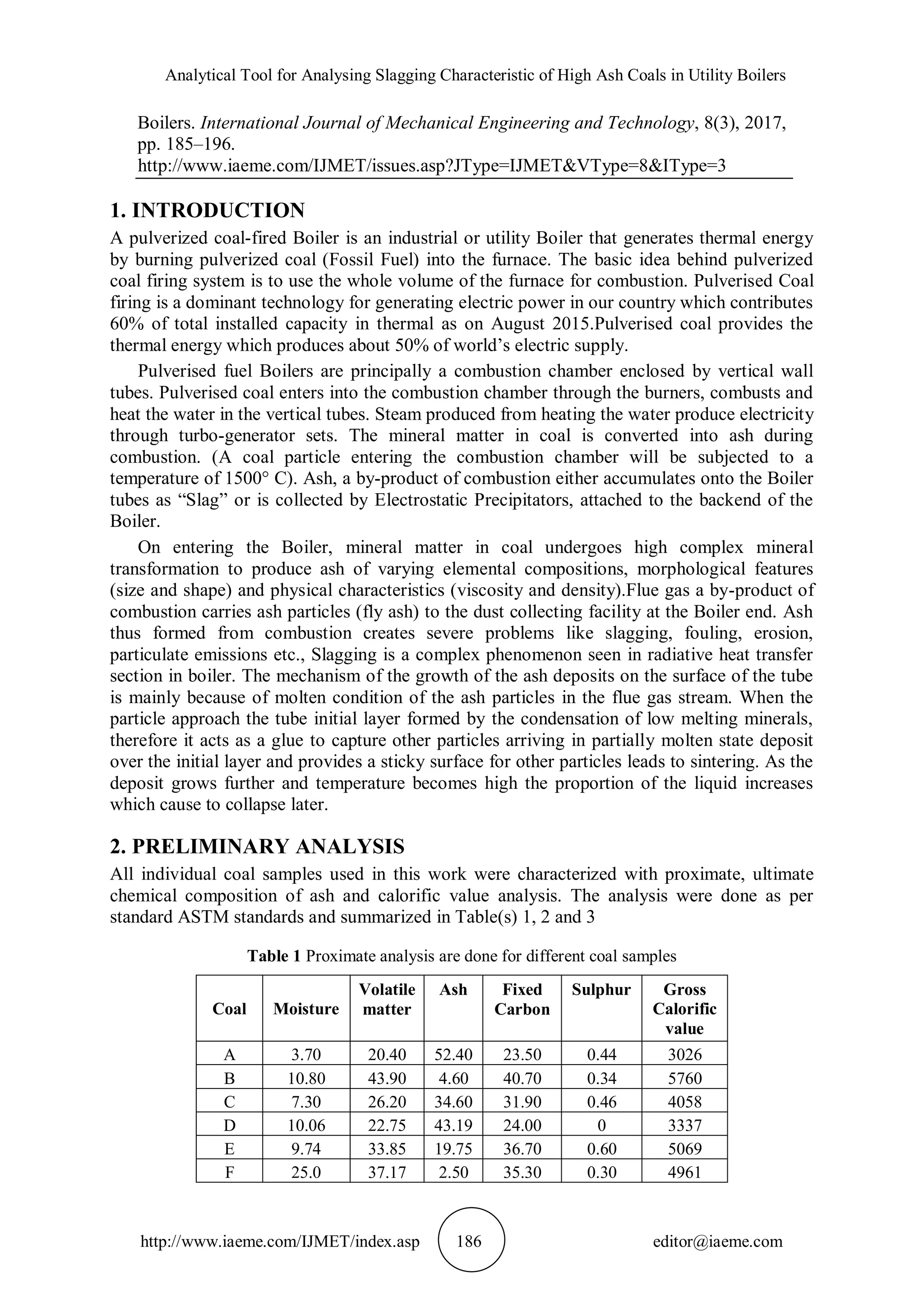
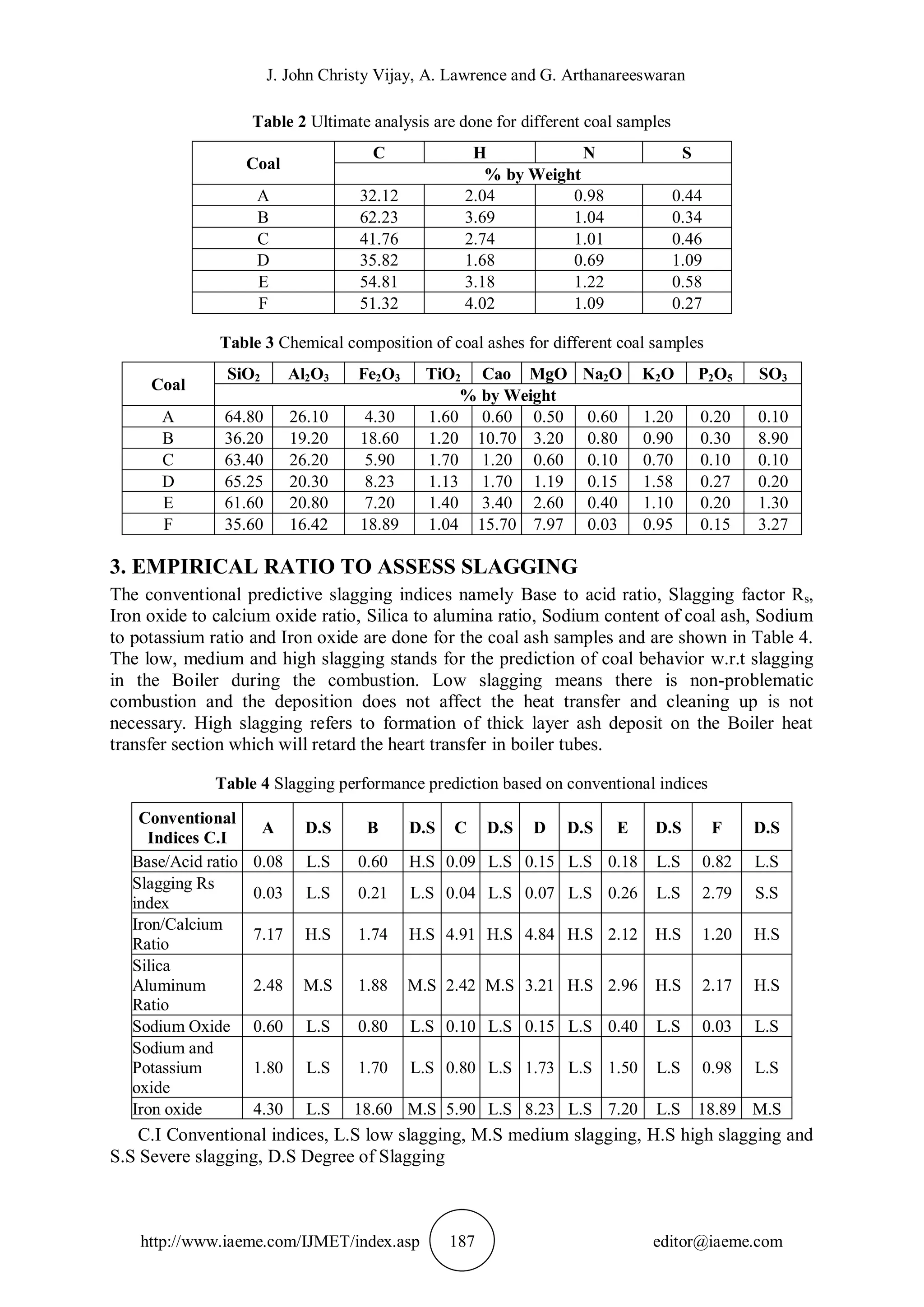

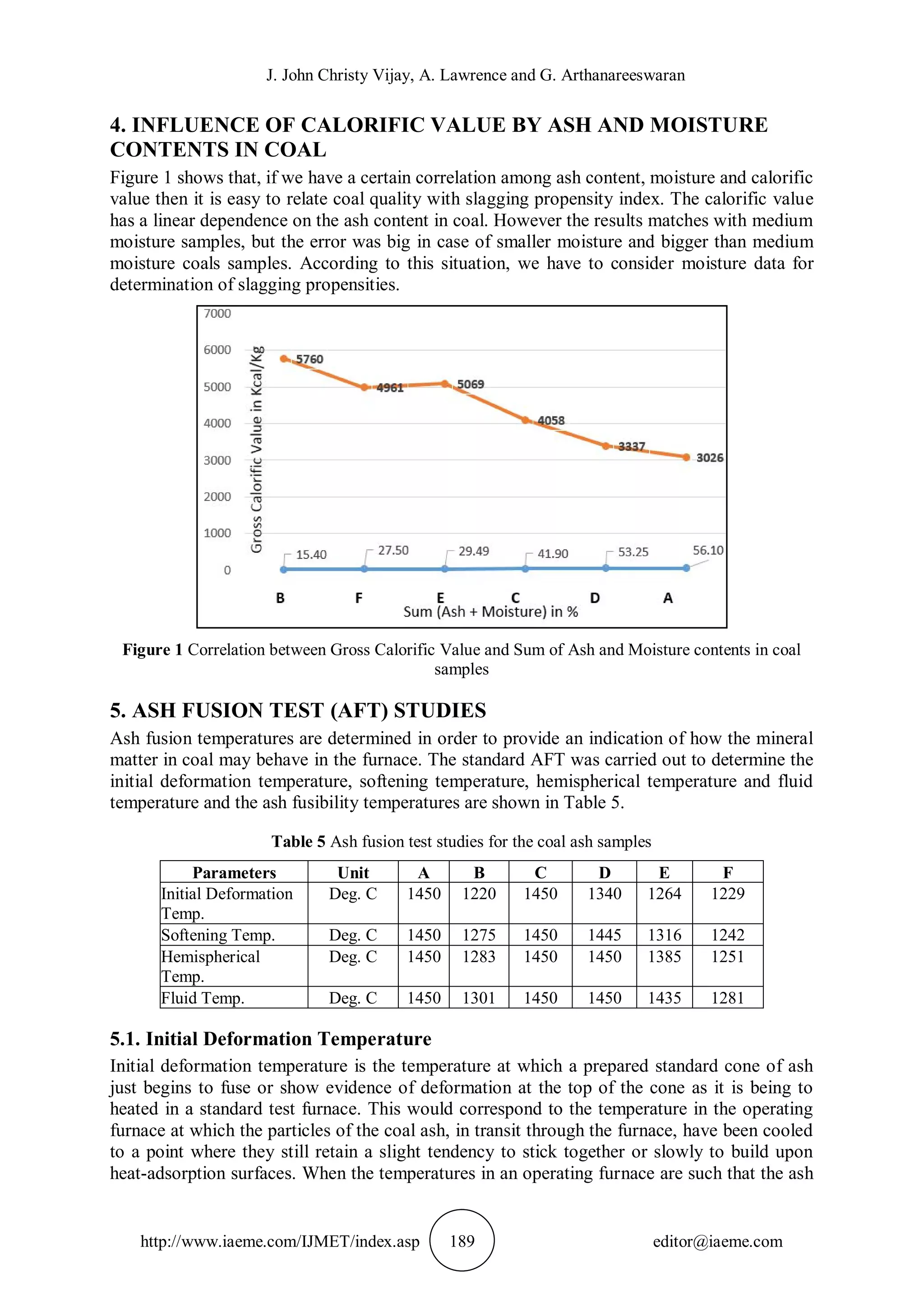

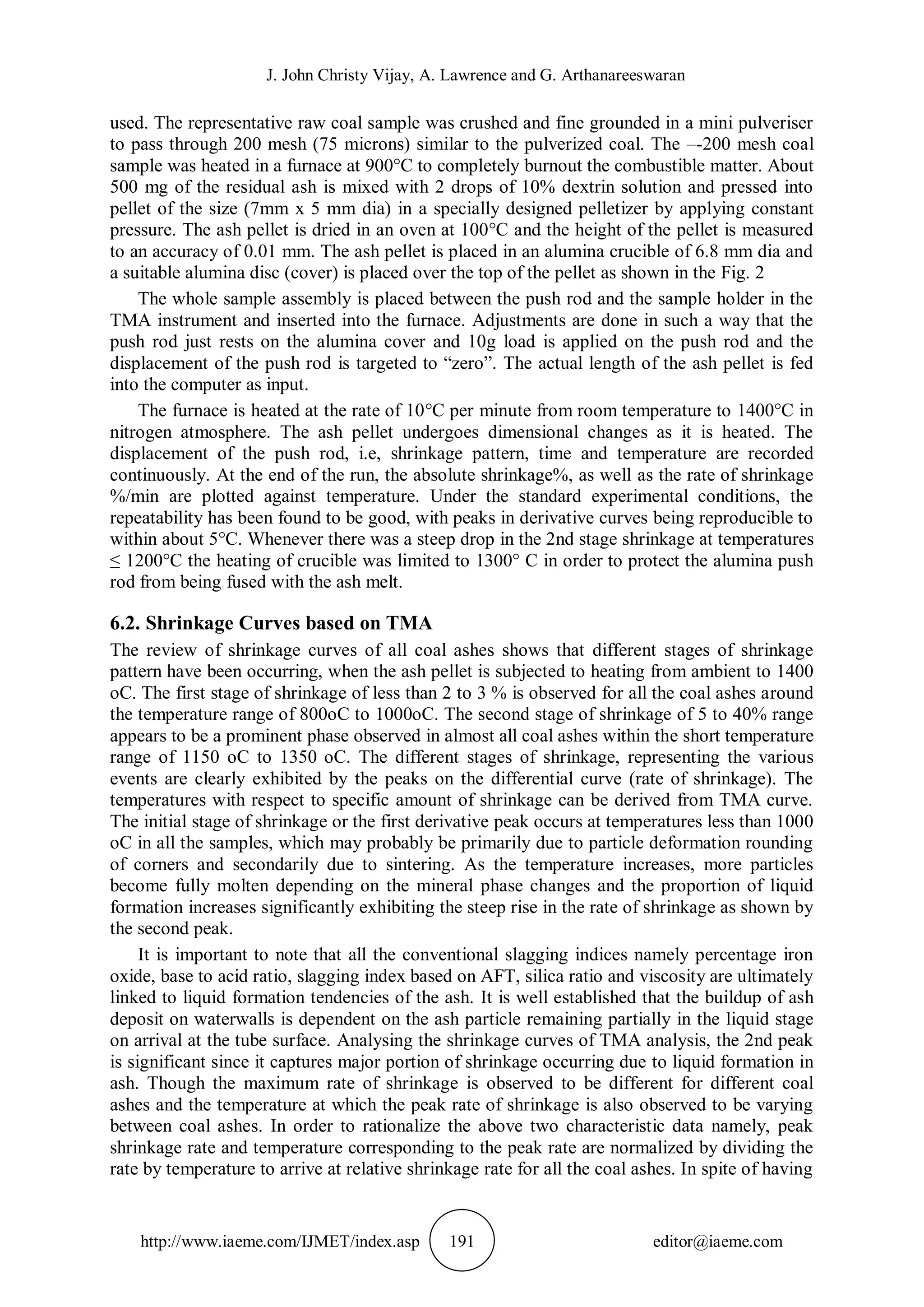
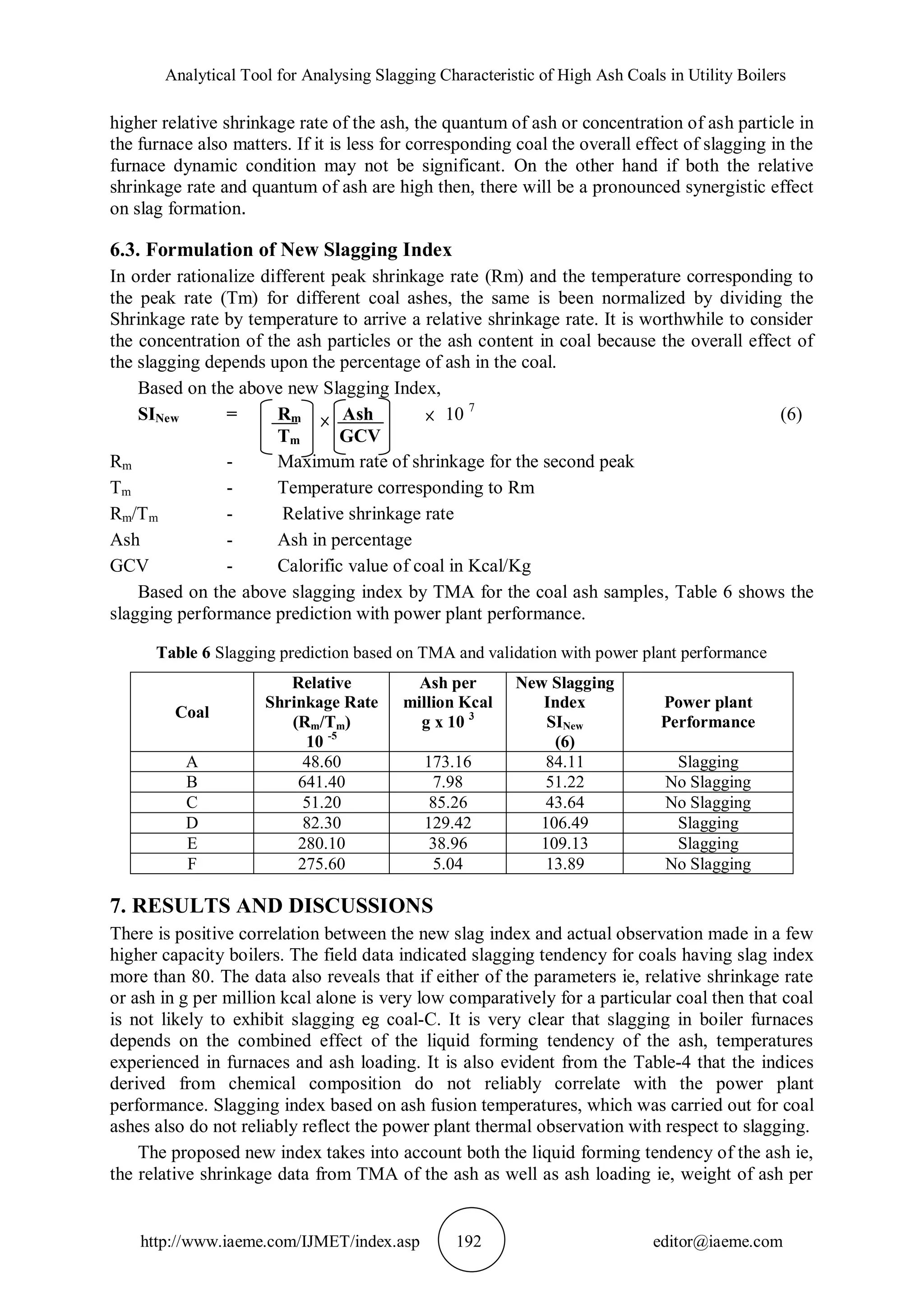
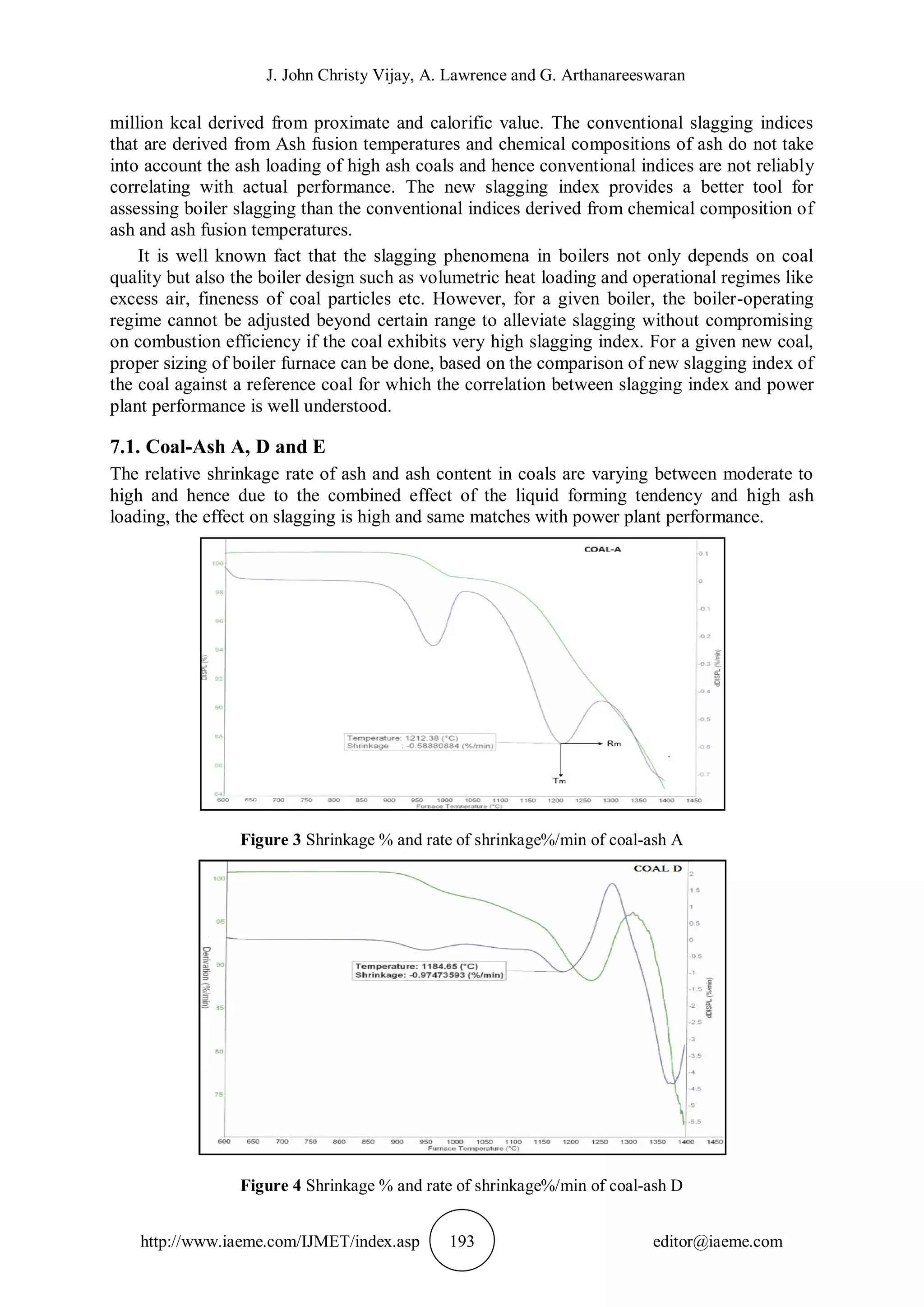
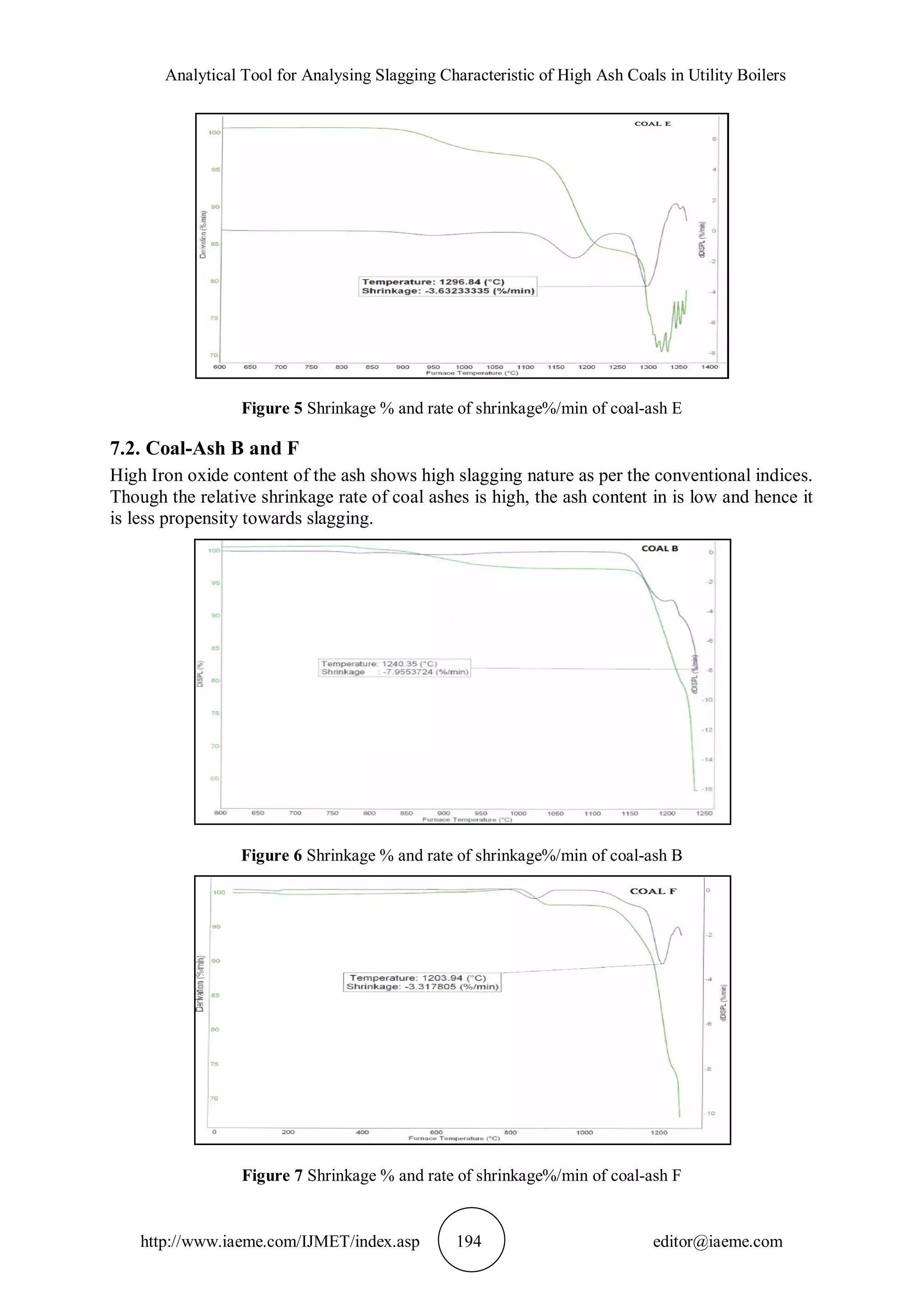
![J. John Christy Vijay, A. Lawrence and G. Arthanareeswaran
http://www.iaeme.com/IJMET/index.asp 195 editor@iaeme.com
7.3. Coal-Ash C
The relative shrinkage rate of ash and ash loading in the furnace is moderate, hence there is
less effect on slag formation and same matches with power plant performance.
Figure 8 Shrinkage % and rate of shrinkage%/min of coal-ash C
8. CONCLUSION
1. The development of new methodology of calculating slagging index based on
maximum shrinkage rates measured in a Thermo-Mechanical Analyser (TMA) offers a
reliable correlation with the reported slagging intensities in the power plant.
2. The new index based on TMA is found to be a better predictive tool for assessing
boiler slagging than conventional indices derived from chemical composition of ash and ash
fusion temperatures.
3. The work described in this paper though with the limited data, has provided a
foundation for a comprehensive coal quality research program for characterization towards
better slagging potential prediction.
9. ACKNOWLEDGEMENT
The authors are thankful to Mr K Ravishankar and Mr S Thiagarajan of Engineering / Fossil
Boiler from BHEL Tiruchirappalli, India for providing support and necessary facilities for the
preparation of the paper.
REFERENCES
[1] T. Ctvrtnickova, M.P Mateo, A. Yanez, G. Nicolas, Application of LIBS and TMA for the
determination of combustion predictive indices of coals and coal blends, Applied surface
Sci. 257(2011) 5447-5451
[2] A. Lawrence, R. Kumar, K.Nandakumar,K. Narayanan, A novel tool for assessing
slagging propensity of coals in PF Boilers, Fuel 87 (2008) 946-950
[3] RE Barrette, JM Murin, GA Mack, JP Dimmer, Evaluating slagging and fouling
parameters presented at the fall meeting of the American flame research committee, 1983
[4] RP Gupta and TF Wall, Mineral matter in coal and ash deposits particle-Advanced
characterization Techniques. Coal and coal combustion in Utility Boiler, New Delhi; 1999
[5] G Couch, Understanding slagging and fouling during PF combustion, IEA report, August
1994](https://image.slidesharecdn.com/ijmet0803021-170316072308/75/ANALYTICAL-TOOL-FOR-ANALYSING-SLAGGING-CHARACTERISTIC-OF-HIGH-ASH-COALS-IN-UTILITY-BOILERS-11-2048.jpg)
![Analytical Tool for Analysing Slagging Characteristic of High Ash Coals in Utility Boilers
http://www.iaeme.com/IJMET/index.asp 196 editor@iaeme.com
[6] TF Wall,RA Creelman,RP Gupta,C Coin, A Lowe, Coal ash fusion temperatures-New
characterization techniques and implication for slagging and fouling, progress in Energy
combustion 24(1998) 345-353
[7] E Raask, Mineral impurities in coal combustion, Behaviour problems and Remedial
measures, Hemisphere Publishing Corporation, New York, 1985.
[8] R Hatt,Correlating the slagging of a utility boiler with coal characteristics, in: L Baxter, R
Desollar (Eds), Applications of Advanced Technology to Ash-related problems in Boiler.
Proceedings of the Engineering Foundation Conference, Waterville Valley, New
Hampshire, 1995, pp 237-244
[9] George kostakis, Mineralogical composition of boiler fouling and slagging deposits and
their relation to fly ashes, Journal of Hazardous materials 185(2011) 1012-1018
[10] Qingyan Fang,Huajian Wang, “Numerical simulations of slagging characteristics in
a down-fired pulverized coal boiler furnace” fuel processing technology 91(2010)88-96
[11] Harun Bilirgen, Slagging in PC boilers and developing mitigation strategies, fuels
115(2014)618-624
[12] Panagiotidis,K Vafiadis,A.Tourlidakis,A.Tomboulides, Study of slagging and fouling
mechanisms in a lignite-fired power plant, applied thermal engineering 74(2014)156-164
[13] S.M Limos-Martinez, K.Watanabe, Slagging and fouling characteristics of Philippines
coal, fuel 85(3) 2006 306-314
[14] M.U Degereji,D.B Ingham,L.Ma M. Pourkashanian,A.Wiliams, Numerical assessment of
slagging potential in pulverised coal boilers, fuel 102 (2012) 345-353
[15] Hiroshi Naganuma, Nobuya ikeda, Takayuki kawai, Ash deposition in pulverized coal
fired boiler,proceedings of the combustion institute 32 (2009) 2709-2716
[16] Hari B.Vuthaluru, Nilesh Kotadiya, Rupa Vuthaluru, David French, Identification of
clinker formation regions in large scale utility boilers, applied thermal engineering 31
(2011) 1368-1380
[17] M.Xu,X He J.L.T Azevedo,M.G Carvalho, Assess fouling and slagging in coal fired
boilers, international journal of energy research 26 (14) (2002) 1221-1236
[18] LL Baxter, R.W Desollar, A description of ash deposition during pulverised coal
combustion-prediction compared with observations, fuel 72 (10) (1993) 1411-1418
[19] Zhanhua Ma,Felicia Iman,Pisi Lu,Rod sears,Lingbu Kong,A.S Rokanuzzaman Donald
P,Mccollor,steven A. Benson, A comprehensive slagging and fouling prediction tool for
coal-fired boilers and its validation/application, fuel processing technology 88 (2007)
1035-1043
[20] Vasquez, Z Ma S.A Benson, Advanced prediction tools for ash formation and deposition
in coal-fired boiler, Clearwater April 18-22 2004, The Clearwater coal conference,
Florida, USA
[21] A.Selwin Mich Priyadharson and T.R.Rangaswamy, Cascaded Fuzzy Controller
Scheme for Combustion Control of a Utility Boiler Using Control Balance Model.
International Journal of Electrical Engineering and Technology (IJEET).2 (2),
2011, pp. 42-53.
[22] Shreenath, Ramakrishna Hegde and Gangadhar Sheri. Technologies of Sulphur
Dioxide Reduction in Coal Fired Thermal Power Plant. International Journal of
Mechanical Engineering and Technology, 5 (9), 2014, pp. 206-212](https://image.slidesharecdn.com/ijmet0803021-170316072308/75/ANALYTICAL-TOOL-FOR-ANALYSING-SLAGGING-CHARACTERISTIC-OF-HIGH-ASH-COALS-IN-UTILITY-BOILERS-12-2048.jpg)